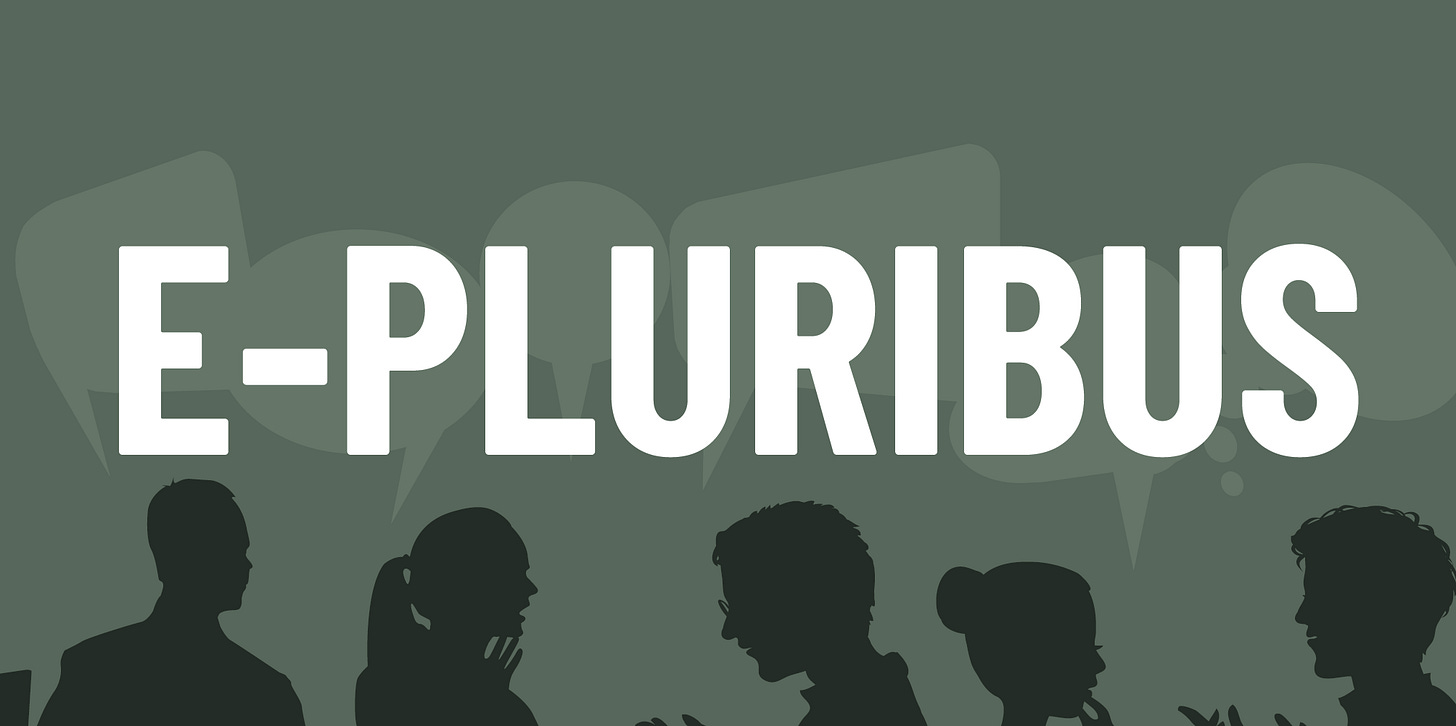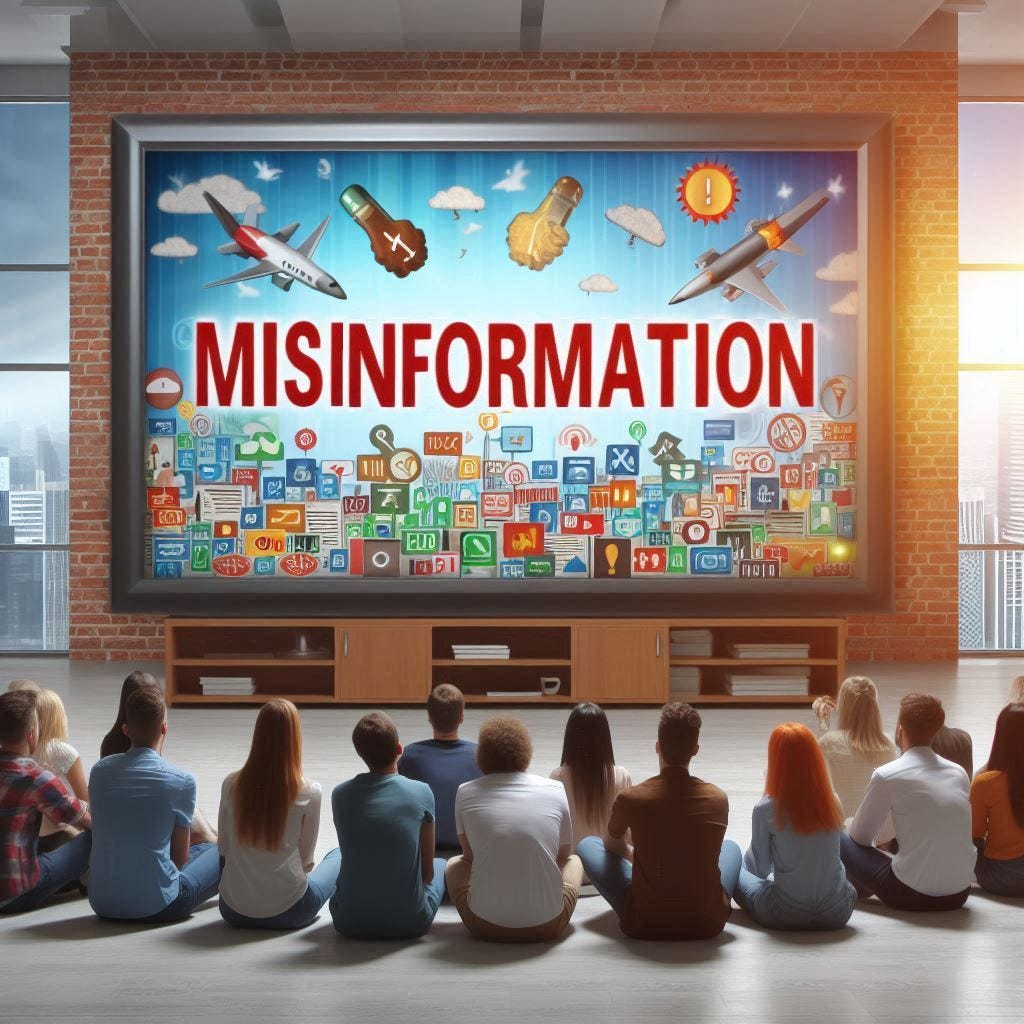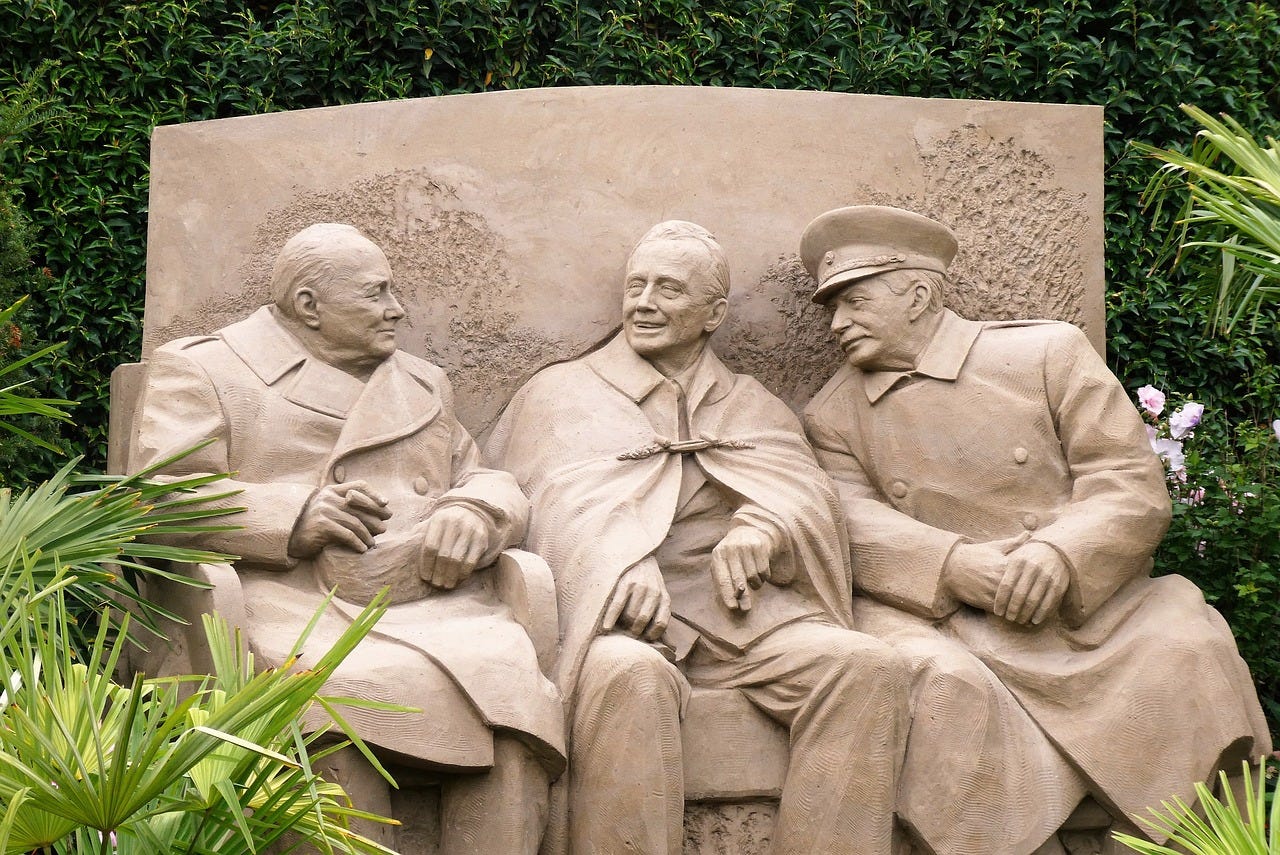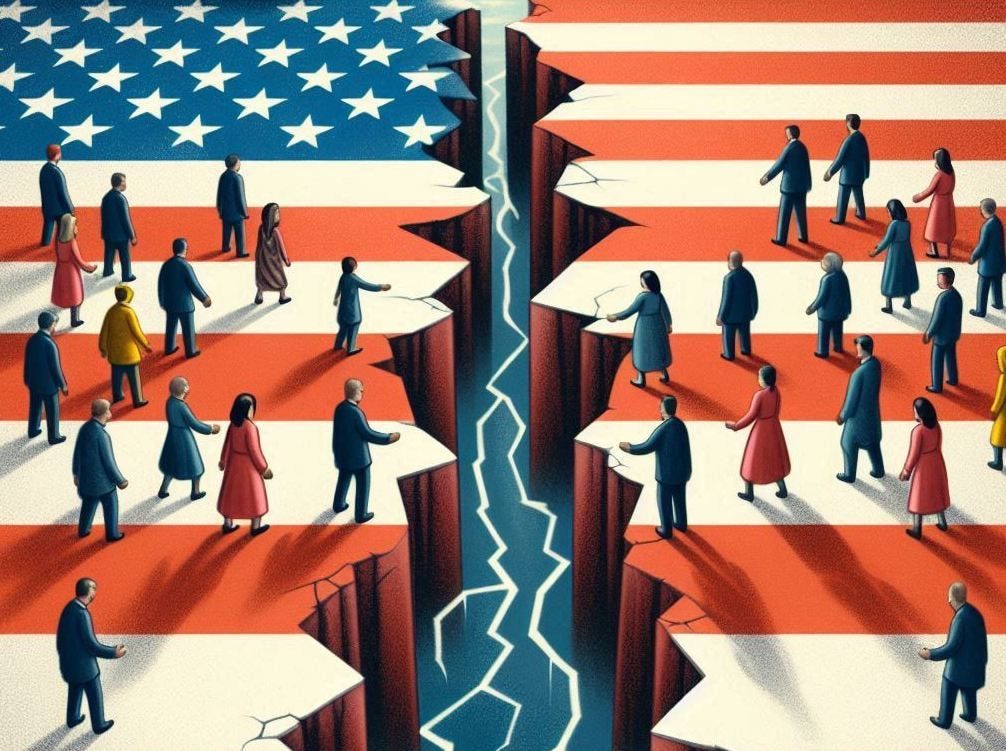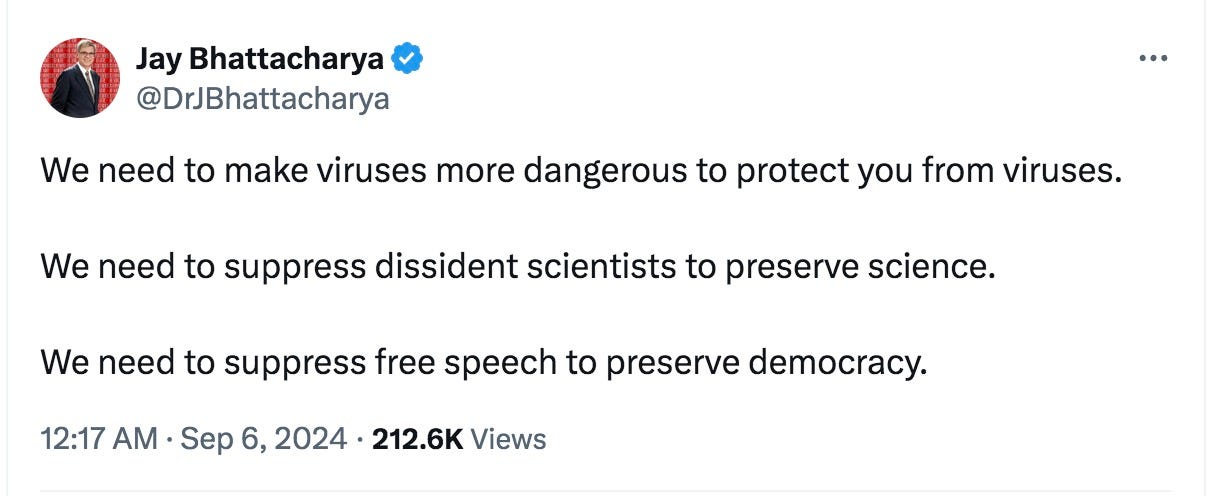E-Pluribus | September 6, 2024
Misinformation: not just for the right; (some) history is bunk; and the state of faculty DEI statements.
A round-up of the latest and best musings on the rise of illiberalism in the public discourse:
Stuart A. Thompson and Tiffany Hsu: Left-Wing Misinformation Is Having a Moment
Often times, misinformation and conspiracy theories are discussed as if they are primarily right-of-center problems. Indeed, this New York Times article by Stuart Thompson and Tiffany Hsu frames “left-wing misinformation” as “having a moment,” but the sheer volume coming from that direction during this election cycle made it impossible for the Times to ignore it.
Several elected officials, along with a top political aide for the billionaire Reid Hoffman, recently suggested, without proof, that former President Donald J. Trump may have staged an attempt to assassinate him in July.
Mark Hamill, an actor and advocate for Democratic causes with more than five million followers on X, criticized a conservative policy proposal by railing against ideas that were not part of the document.
And last month, Vice President Kamala Harris’s presidential campaign misleadingly suggested, in posts viewed millions of times, that Mr. Trump was confused about his whereabouts during a campaign stop. Her followers seized on the posts to claim that Mr. Trump was suffering from cognitive decline.
For years, the discussion about misinformation online has focused on falsehoods circulating on the American right. But in recent weeks, a flurry of conspiracy theories and false narratives have also been swirling on the left.
Some misinformation researchers are worried that the new spate of left-leaning conspiracy theories could further polarize political discourse before the November election. More than one-third of President Biden’s supporters believed the assassination attempt may have been staged, according to a poll in July by Morning Consult.
“I don’t anticipate that we will collectively become less conspiratorial,” said Adam Enders, an associate professor of political science at the University of Louisville. “If anything, the closer we get to Election Day, the more it’ll increase.”
The researchers emphasized that the falsehoods and exaggerations were not as entrenched or as toxic as those permeating right-wing spaces online. Several studies have shown that the political right is more likely to share false narratives and misinformation. Researchers at Northeastern University found that Democrats were generally better than Republicans at discerning true from false news.
Read it all.
Niall Ferguson: History and Anti-History
No stranger to controversy, Tucker Carlson poured more kerosene on the public discourse with a recent interview of Darryl Cooper, a man Carlson says may be the “best and most honest popular historian in the United States.” To hear Carlson tell it, Cooper is controversial because he is “trying to understand World War Two.” Writing for The Free Press, Niall Ferguson is not feeling quite that generous towards Cooper.
True history proceeds from an accumulation of evidence, some in the form of written records, some in other forms, to a reconstitution of past thought, in R.G. Collingwood’s phrase, and from there to a rendition of Leopold von Ranke’s was eigentlich gewesen: what essentially happened. By contrast, Darryl Cooper [recently interviewed by Tucker Carlson] offers a series of wild assertions that are almost entirely divorced from historical evidence and can be of interest only to those so ignorant of the past that they mistake them for daring revisionism, as opposed to base neo-Nazism.
[. . .]
“What you’re not doing,” Carlson says at one point, “is using history as a weapon, a cudgel, or as a kind of propaganda tool.” But that is precisely what Darryl Cooper is doing. His whole shtick is that the Western world’s escape from the racial hierarchies of the nineteenth and twentieth centuries has been a kind of massive historical scam. The only reason we have a positive view of the direction history has taken since 1945 is that we have been brainwashed into believing in “the founding mythology of the. . . current global order.”
[. . .]
According to Cooper, the “official story” about the rise of Hitler is as follows. Once upon a time, Germany was a “sophisticated, cultural superpower.” But then, after the First World War and the Weimar Republic “they all turned into demons for a few years, and now they’re fine again.” (At no point does Cooper vouchsafe who wrote this strawman “official” history.) But that’s not what really happened. Oh, no. Because “everything has a cause,” and Adolf Hitler, just like Jim Jones, was not born a psychotic murderer. The circumstances were responsible. And so we need—though it’s of course forbidden—to “try to understand how the Germans saw the world” and to see how they “genuinely felt like they were the ones under attack, that they were the ones being victimized by their neighbors.”
This will hardly come as news to the many scholars who have devoted years of their lives to studying the attitudes of ordinary Germans in the 1920s and 1930s, showing how many people simply refused to accept the reality of their country’s defeat in the war and the legitimacy of the democratic republic ushered in by the November 1918 revolution. The difference is that Cooper not only understands that many Germans felt this way. He appears to think they were right.
[. . .]
Note that at no point in their conversation do Carlson and Cooper mention the Holocaust. The word genocide is never uttered. They talk about Jews a good deal, but not as the principal victims of Hitler’s lethal racial policies.
The last time I heard this kind of thing was when the full extent of the Wehrmacht’s complicity in mass murder was being exposed in the 1980s and 1990s. The people who made these arguments were old Nazis, making excuses. And that is what we have here, reheated and served up to an American audience: Nazi excuses. The well-documented reality is that the mass murder, including systematic starvation, of soldiers and civilians in the German-occupied Soviet territory was ideologically motivated and deliberately planned.
[. . .]
I don’t need to browse his X posts to know what Darryl Cooper is. He tells us himself. “The post–World War II order,” he tells Carlson, “is really defined by the fact that, you know, after Nuremberg, it really became effectively illegal in the West to be, like, genuinely right wing, like the things we call right wing.” The only right-wing parties that are illegal in Europe today are Nazi parties. And the only people who regard the Nuremberg war crimes trials as a “sacrificial ritual”—Cooper again—are Nazis.
Read it all here.
Nate Tenhundfeld: The Great DEI-vide
While America is a great melting pot, this does not mean that variations do not exist throughout the country. Nate Tenhundfeld of Heterodox Academy has found a good example of that phenomenon with an analysis of institutions of higher education and requirements for DEI statements for potential faculty members.
An analysis from researchers at the American Enterprise Institute (AEI) of faculty jobs posted during Fall 2020 found that 19% of job ads required a DEI statement—a number the researchers acknowledged likely underestimated the prevalence.
Though fairly widespread, the practice of asking for DEI statements has become extremely controversial because, as HxA President John Tomasi has noted, “diversity statements have gone beyond implicit pressure, and have [at times] been used as blatant litmus tests for ideology.”
Data show that DEI statements which do not “discuss race/ethnicity and gender diversity actions or efforts” are rated as weaker and result in candidates being seen as “less competent, less hireable, and less likable.” Discussions of socioeconomic diversity, efforts to engage students from rural communities, and (heaven forbid) viewpoint diversity did not speak the shibboleths that committees requesting such statements were looking for.
Given this context and the increasing number of states that have been passing “divisive concepts” bills (laws that seek to restrict DEI-related activities and education), I wanted to assess the current prevalence of DEI statement requirements in hiring, in addition to exploring regional differences in requirements.
[. . .]
So, what did we find?
Of the 1,907 job postings for August 2024, 467 (24.5%) mentioned DEI statements (either standalone or to be addressed/included in other statements) as part of the hiring process.
I subsequently calculated the percentage for each state and arrived at this map, which represents a quartile interpolation of the colors along the spectrum—meaning it compresses or expands the colors based on the distribution of percentages across the range:
At first glance one would be excused for mistaking this figure for an electoral map of a recent U.S. presidential election. The regional differences become immediately apparent. Schools along the west coast and in the northeast more frequently ask applicants to submit DEI statements than are those in the southeast and upper midwest.
In fact, if you take the percentages above and correlate them with the percentage of votes that President Biden received in each state in the 2020 election, you get a 0.517 correlation!
This is obviously not to suggest any sort of causal relationship. But it does serve to highlight that there is a significant source of shared variance between the politics of a state and the interest in obtaining DEI-related statements from faculty applicants. This could be attributable to state politics, a self-selection bias in the school that faculty choose to work at, or any number of other things.
Read the whole thing.
Around Twitter (X)
Derek Thompson has an interesting observation on the “you think you know history, but what about this?” type of historian:
The American Political Science Association did a quick about face when Aaron Sibarium came calling:
And finally, Stanford School of Medicine’s Jay Bhattacharya on the ends-justify-the-means rationalization of illiberalism:



